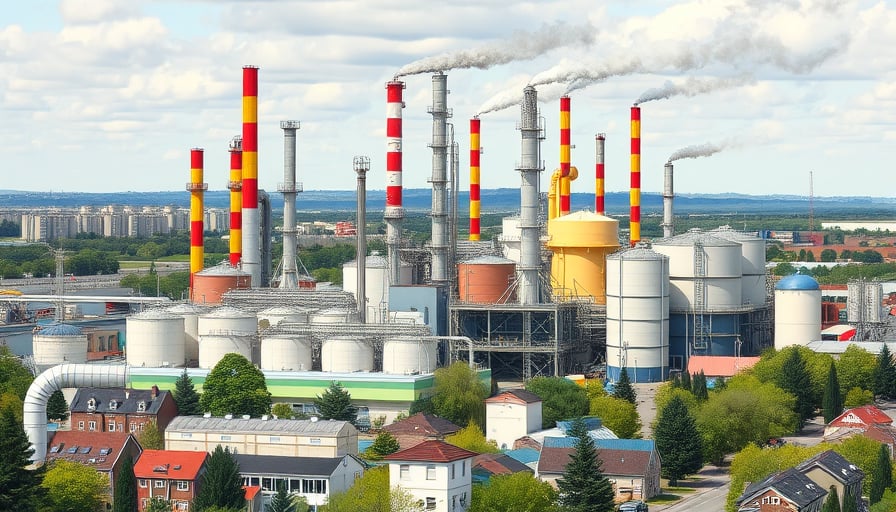Corporate Transaction Analysis: ADNOC‑Covestro Deal Under the Lens
On 14 November the European Commission granted conditional approval for the acquisition of Covestro by the Abu Dhabi National Oil Company (ADNOC). The transaction, valued at approximately €15 billion, is poised to become one of the largest cash deals in the global chemicals industry. While the approval signals regulatory clearance, a closer examination of the underlying business fundamentals, regulatory backdrop, and competitive dynamics reveals several overlooked trends, potential risks, and opportunities that may influence the deal’s ultimate success.
1. Regulatory Framework and Conditionality
1.1 EU Foreign Subsidies Regulation (FSR) Review
The EU’s FSR, effective since 1 January 2023, was designed to scrutinize cross‑border acquisitions where a sovereign‑controlled entity is a party. ADNOC’s status as a state‑owned enterprise triggered the mandatory review. The Commission’s conditional approval indicates that ADNOC met the “no significant distortion of competition” threshold, albeit subject to concessions that address concerns over potential market concentration in the high‑performance polymer segment.
1.2 Concessions and Monitoring
ADNOC pledged to maintain a minimum of 50 % of the company’s sales to non‑EU customers and to refrain from using the acquisition to obtain undue competitive advantages in the EU. Moreover, the Commission will monitor the post‑merger structure for anti‑competitive practices. These conditions suggest that the Commission is particularly wary of the potential for ADNOC to leverage its upstream oil and gas assets to secure preferential supply of raw materials for Covestro’s polymer production.
2. Business Fundamentals of Covestro
2.1 Market Position and Revenue Mix
Covestro’s revenue is concentrated across three verticals: automotive (≈ 38 %), construction (≈ 29 %), and technology/industrial (≈ 33 %). The automotive segment, driven by lightweight, high‑performance polymers, has shown a 7 % YoY growth in 2023, while the construction segment remains relatively stable at 2 % growth, largely due to regulatory pressure on environmental standards.
2.2 Cost Structure and Margins
Operating margins have hovered around 12 % for the past three years, reflecting tight raw‑material price pressures and a shift towards higher‑value specialty polymers. Covestro’s EBITDA margin of 14 % is above the industry median (≈ 10 %), indicating a resilient cost base and effective pricing power.
2.3 Capital Expenditure Outlook
The company’s 2024 capex plan emphasizes research and development of sustainable polymers, particularly those derived from renewable feedstocks. This aligns with the EU’s Green Deal and offers a potential competitive advantage, especially if ADNOC can provide capital resources to accelerate commercialization.
3. Competitive Dynamics
3.1 Key Competitors
Major players in the polymer space include Bayer MaterialScience, Solvay, and Dow Chemical. Bayer has been aggressively expanding its sustainability portfolio, while Solvay is investing heavily in bio‑based polymers. The market shares of these competitors remain relatively balanced, but the entrance of ADNOC could tilt the landscape if it brings significant synergies.
3.2 Potential Synergies
ADNOC’s upstream oil and gas assets could reduce raw material costs for Covestro’s polymer manufacturing. Preliminary estimates suggest a 2–3 % reduction in feedstock cost, which could translate into €200‑€300 million in annual savings. However, the risk of over‑reliance on fossil‑fuel‑derived feedstocks may conflict with Covestro’s sustainability commitments and the EU’s carbon neutrality targets.
4. Overlooked Trends and Risks
4.1 Sustainability Pressure
The chemicals industry is under increasing scrutiny for carbon footprints. Covestro’s commitment to 100 % renewable energy usage by 2030 is a strategic advantage. ADNOC’s involvement could raise concerns among ESG investors if the acquisition is perceived to undermine the company’s sustainability trajectory.
4.2 Political Risk
ADNOC’s state‑owned status may expose Covestro to geopolitical fluctuations, particularly in regions where ADNOC operates. Trade sanctions or political disputes could disrupt supply chains or impose additional compliance burdens.
4.3 Regulatory Compliance Costs
While the Commission’s conditional approval mitigates immediate antitrust concerns, the ongoing monitoring will require robust compliance frameworks. This could increase administrative overhead and divert management attention from core operational initiatives.
5. Market Reactions and Share Price Dynamics
5.1 Immediate Impact
Following the announcement, Covestro’s share price has remained in a narrow band near its recent highs, suggesting cautious optimism. The lack of a pronounced rally indicates that investors view the conditional nature of the approval as a risk factor.
5.2 Long‑Term Outlook
If ADNOC successfully delivers the agreed concessions and regulatory conditions are satisfied, the acquisition could unlock shareholder value through cost synergies and expanded market access. Conversely, any delays or failures could precipitate a sell‑off, eroding market confidence.
6. Opportunities for Stakeholders
6.1 Investor Perspective
Investors could position themselves for potential upside by taking a long stance in the near term, provided the transaction closes without significant regulatory setbacks. However, a balanced approach that monitors ESG compliance metrics would be prudent.
6.2 Strategic Partners
Covestro’s partners in automotive and construction may benefit from increased scale and access to new markets. The company could also leverage ADNOC’s financial strength to invest in next‑generation polymer technologies, enhancing its competitive moat.
6.3 Regulatory Bodies
The EU Commission’s monitoring framework could serve as a benchmark for future foreign‑subsidy reviews, promoting transparency and accountability in cross‑border acquisitions involving state‑owned enterprises.
7. Conclusion
The ADNOC‑Covestro deal illustrates a complex intersection of regulatory scrutiny, market dynamics, and sustainability imperatives. While the conditional approval represents a significant milestone, the transaction’s finality hinges on compliance with EU conditions, successful integration of ADNOC’s upstream assets, and maintaining Covestro’s sustainability trajectory. Stakeholders must weigh the potential cost synergies against the geopolitical and ESG risks inherent in this high‑profile acquisition. Continued vigilance and adaptive strategy will be essential to realize the full value of this unprecedented cash transaction in the chemicals sector.




